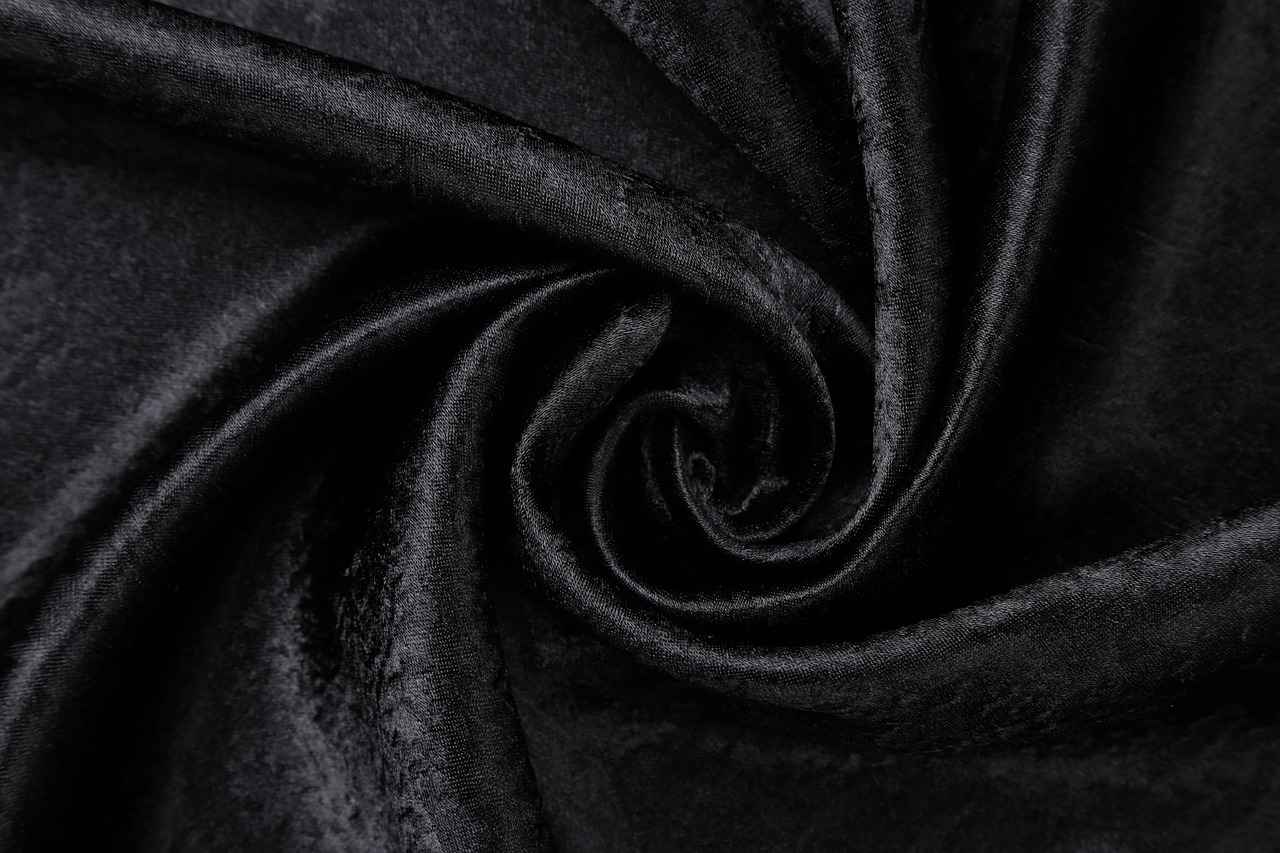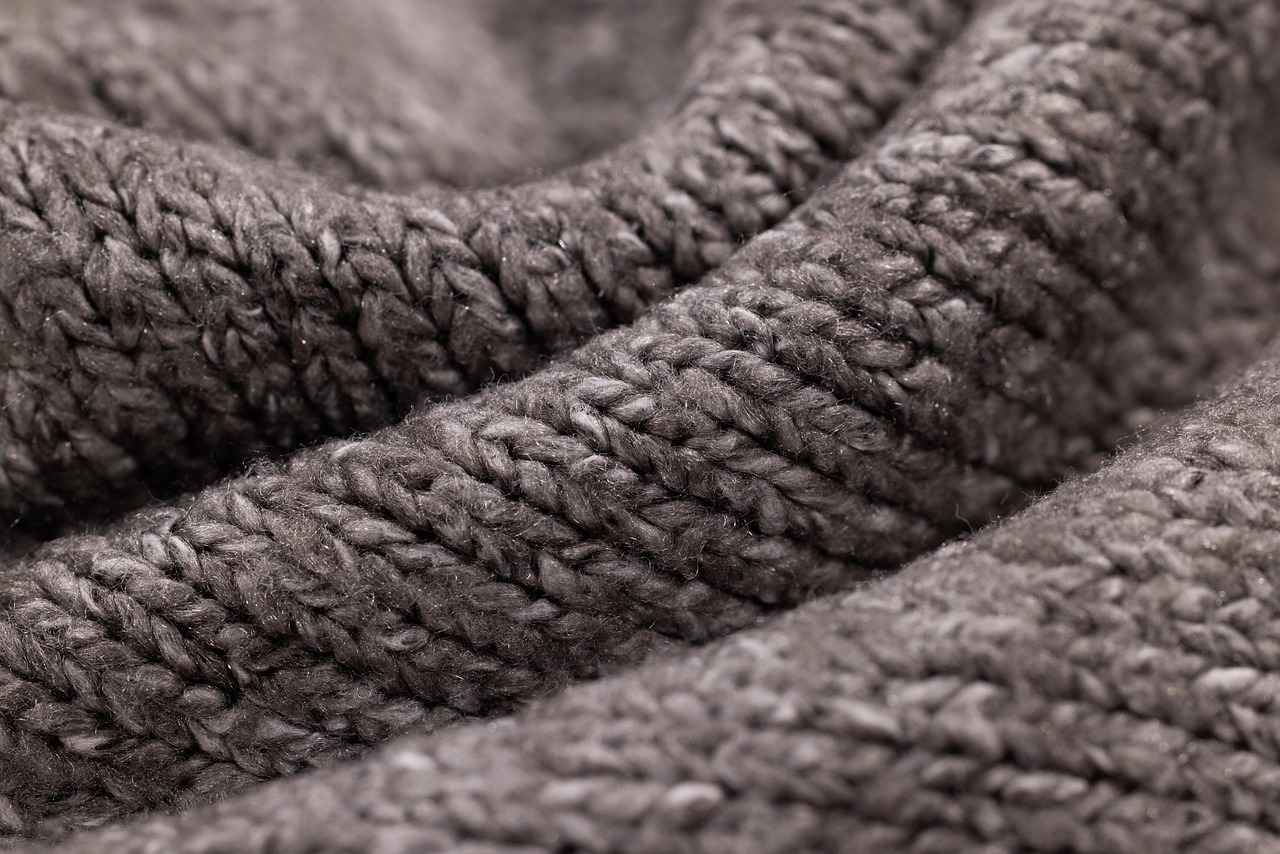This article explores the potential harm fabric conditioners can cause to night dresses and offers alternative solutions for maintaining fabric quality and longevity. Night dresses, often made from delicate materials, require special care to preserve their beauty and functionality. Understanding the implications of using fabric conditioners is crucial for anyone looking to maintain their nightwear.
What Are Fabric Conditioners and How Do They Work?
Fabric conditioners are products designed to soften fabrics and reduce static cling. They work by coating the fibers of the fabric, providing a smooth feel. However, this coating can hinder the breathability of delicate fabrics, such as those used in night dresses. The chemical compounds in these conditioners can lead to long-term damage, particularly if used regularly.
Why Are Night Dresses Made from Delicate Fabrics?
Night dresses are typically crafted from luxurious materials like silk, satin, and lace. These fabrics are chosen for their softness and elegance, but they are also sensitive to harsh chemicals. Understanding the unique properties of these materials is essential for proper care. For instance, silk can lose its sheen and structural integrity when exposed to certain chemicals.
How Do Fabric Conditioners Affect Delicate Fabrics?
Using fabric conditioners on delicate fabrics can lead to several issues, including:
- Residue Build-Up: Conditioners can leave a film that alters the texture of the fabric.
- Color Fading: Some ingredients may react with dyes, causing colors to dull over time.
- Loss of Breathability: The coating can trap heat and moisture, making the fabric less comfortable.
What Are the Common Ingredients in Fabric Conditioners?
Fabric conditioners often contain a mix of chemicals, including:
- Quaternary Ammonium Compounds: These can build up on fabrics and cause stiffness.
- Fragrances: While they may smell pleasant, they can irritate sensitive skin.
- Preservatives: These are used to extend shelf life but can have adverse effects on delicate fabrics.
What Are the Signs of Damage on Night Dresses?
Recognizing the signs of damage is key to maintaining your night dresses. Look for:
- Discoloration: Noticeable fading or yellowing can indicate chemical damage.
- Texture Changes: A rough feel or loss of softness can signal residue build-up.
- Structural Damage: Fraying edges or weakened seams are signs of wear from harsh treatments.
Are There Safe Alternatives to Fabric Conditioners?
If you’re seeking softer fabrics without the risks associated with traditional fabric conditioners, consider these natural alternatives:
- White Vinegar: Acts as a natural softener and helps to remove detergent residue.
- Baking Soda: Can be added during the wash cycle to soften fabrics.
- Essential Oils: For fragrance, a few drops of essential oil can be added to the wash.
How to Properly Care for Your Night Dress?
To extend the life of your night dress, follow these care tips:
- Hand Wash: Use cold water and a gentle detergent.
- Air Dry: Avoid the dryer; instead, lay flat or hang to dry away from direct sunlight.
- Store Properly: Use breathable garment bags to protect against dust and pests.
What Are the Benefits of Using Natural Softening Agents?
Natural softening agents are not only effective but also gentle on fabrics. They help maintain the integrity of delicate materials while providing a fresher scent without the risk of chemical damage.
How to Test Fabric Conditioners on Your Night Dress?
Before using any new fabric conditioner, conduct a patch test on a hidden area of the fabric. Apply a small amount and observe for any adverse effects over 24 hours.
What Do Experts Recommend for Maintaining Night Dresses?
Experts suggest avoiding fabric conditioners altogether for delicate fabrics. Instead, they recommend gentle washing techniques and natural alternatives to keep your night dresses looking their best.
Are There Myths About Fabric Conditioners and Delicate Fabrics?
Many believe that fabric conditioners are essential for softness, but this is a myth. Understanding the true effects of these products can lead to better care practices for your delicate garments.

What Are Fabric Conditioners and How Do They Work?
Fabric conditioners play a significant role in the laundry process, offering a range of benefits that many consumers appreciate. However, understanding what fabric conditioners are and how they work is essential, especially when it comes to maintaining delicate fabrics like those used in night dresses.
What Are Fabric Conditioners? Fabric conditioners, also known as fabric softeners, are products designed to enhance the softness and feel of fabrics after washing. They typically come in liquid form or as dryer sheets and are added during the rinse cycle or in the dryer. The primary purpose of these products is to reduce static cling, making clothes easier to handle and wear.
How Do Fabric Conditioners Work? The effectiveness of fabric conditioners lies in their unique composition. Most fabric softeners contain a mixture of quaternary ammonium compounds, fatty acids, and various fragrances. These ingredients work together to coat the fibers of the fabric, creating a smoother surface that enhances the overall feel. This coating helps to reduce friction between fibers, which can lead to a softer texture and less static electricity.
While this may sound beneficial, it is crucial to recognize that the same properties that make fabric conditioners effective can also pose risks to delicate fabrics. For example, the coating can lead to a buildup of residues that may alter the appearance and texture of night dresses made from silk, satin, or lace. These delicate materials are particularly sensitive to chemical treatments, which can affect their breathability and overall integrity.
Why Are Night Dresses Made from Delicate Fabrics? Night dresses are often crafted from luxurious materials that require special care. Fabrics such as silk are known for their smoothness and sheen, but they can also be easily damaged by harsh chemicals. Understanding the properties of these fabrics is essential for anyone looking to maintain the quality and longevity of their night dresses.
In summary, while fabric conditioners can make laundry feel softer and more pleasant, their chemical composition can have unintended consequences for delicate fabrics. Being aware of these risks allows consumers to make informed choices about fabric care, particularly when it comes to cherished items like night dresses. For those seeking alternatives, exploring natural softening agents or adjusting washing techniques may provide a safer route to maintaining fabric quality.

Why Are Night Dresses Made from Delicate Fabrics?
Night dresses are a staple in many wardrobes, providing comfort and elegance during sleep. One of the key reasons for their appeal is the use of delicate fabrics such as silk, satin, and lace. These materials not only enhance the aesthetic appeal of night dresses but also contribute to their luxurious feel. However, the unique properties of these fabrics necessitate special care to maintain their quality and longevity.
Silk is renowned for its softness, sheen, and breathability. This natural protein fiber is produced by silkworms and is known for its moisture-wicking properties, making it an ideal choice for sleepwear. However, silk is also sensitive to harsh chemicals and can easily lose its luster if not cared for properly. Washing silk in cold water and avoiding fabric conditioners can help preserve its luxurious texture.
Satin is a weave rather than a fiber, typically made from silk, polyester, or nylon. It is characterized by its smooth surface and glossy finish, which enhances the overall elegance of night dresses. However, satin is prone to snagging and can be damaged by fabric softeners that leave residues, making it essential to follow specific care instructions, such as hand washing or using a gentle cycle.
Lace is often used as an accent in night dresses, adding a touch of romance and femininity. This intricate fabric is delicate and can be easily torn or frayed. Its sensitivity to chemical treatments means that care must be taken when washing and storing lace garments. Opting for gentle washing methods and avoiding fabric conditioners can help maintain the integrity of lace.
Fabric conditioners can coat delicate fabrics, leading to a loss of breathability and altering the texture. Over time, this can result in a dull appearance and reduced comfort. For night dresses made from silk, satin, or lace, it is crucial to avoid these products to preserve their natural qualities.
- Always check the care label for specific washing instructions.
- Use cold water and a gentle detergent designed for delicate fabrics.
- Avoid fabric conditioners and opt for natural alternatives like vinegar.
- Air dry night dresses to prevent damage from high heat.
- Store them in a cool, dry place to avoid moisture and mildew.
In summary, the choice of delicate fabrics for night dresses is driven by their luxurious feel and aesthetic appeal. However, these materials require careful handling to maintain their beauty and longevity. By understanding the properties of silk, satin, and lace, and avoiding harmful products like fabric conditioners, you can ensure that your night dresses remain in pristine condition for years to come.

How Do Fabric Conditioners Affect Delicate Fabrics?
Fabric conditioners are widely used in laundry routines to achieve softer and more pleasant-smelling clothes. However, when it comes to delicate fabrics, particularly those used in night dresses, the implications of using these products can be quite damaging. In this section, we will explore the specific ways fabric conditioners can adversely affect delicate fabrics.
Delicate fabrics such as silk, satin, and lace are often chosen for night dresses due to their luxurious feel and elegant appearance. However, these materials are particularly sensitive to the chemical compositions found in many fabric conditioners. When fabric conditioners are used, they can leave behind residues that not only alter the texture of the fabric but also diminish its visual appeal.
Residue Build-Up: One of the primary concerns with fabric conditioners is the residue they leave on fabrics. This residue can create a film on delicate materials, leading to a stiff or greasy feel. Over time, this build-up can make the fabric appear dull and lifeless, detracting from the overall beauty of the night dress.
Altered Breathability: Delicate fabrics are often chosen for their breathability, which is essential for comfort, especially during sleep. Fabric conditioners can compromise this breathability by coating the fibers, trapping heat and moisture, and making the fabric less comfortable to wear.
Color Fading: Many fabric conditioners contain optical brighteners and fragrances that can interact negatively with the dyes used in delicate fabrics. This interaction can lead to color fading or discoloration, which is particularly concerning for night dresses that are often brightly colored or intricately designed.
Weakened Fibers: The chemicals in fabric conditioners can also weaken the fibers of delicate fabrics, making them more susceptible to tearing or fraying. This weakening can significantly reduce the lifespan of a night dress, leading to premature wear and the need for replacement.
Allergic Reactions: Some individuals may experience allergic reactions to the fragrances and chemicals in fabric conditioners. This can lead to skin irritation, particularly in sensitive areas where the fabric comes into contact with the skin. For those who prioritize comfort and health, avoiding fabric conditioners may be a wise choice.
Given these potential risks, it is essential to consider alternatives to traditional fabric conditioners when caring for night dresses. Natural softening agents, such as vinegar or baking soda, can be effective in softening fabrics without the adverse effects associated with chemical conditioners. Additionally, gentle washing techniques and proper storage can help maintain the quality of delicate fabrics.
In summary, while fabric conditioners may offer short-term benefits such as softness and reduced static, the long-term effects on delicate fabrics like those used in night dresses can be detrimental. By understanding how these products interact with delicate materials, consumers can make more informed choices about fabric care, ensuring their night dresses remain beautiful and in excellent condition for years to come.

What Are the Common Ingredients in Fabric Conditioners?
Understanding the ingredients in fabric conditioners is crucial for consumers who want to make informed choices about the products they use on their delicate garments, such as night dresses. Fabric conditioners often contain a variety of chemicals that can have significant effects on the integrity and appearance of these fabrics. By highlighting the common ingredients found in fabric conditioners, we can shed light on their potential impacts.
Fabric conditioners are formulated with several key ingredients that serve specific purposes. Here are some of the most common components:
- Quaternary Ammonium Compounds (Quats): These are the primary softening agents in many fabric conditioners. While they effectively reduce static cling and soften fabrics, they can leave a waxy residue that may build up on delicate fabrics like silk and lace.
- Fragrances: Many fabric conditioners are scented to provide a fresh smell. However, synthetic fragrances can cause skin irritation and may not be suitable for sensitive skin or delicate fabrics.
- Preservatives: To prolong shelf life, fabric conditioners often contain preservatives. Some of these chemicals can be harsh on delicate fabrics, leading to discoloration or degradation over time.
- Colorants: These are added to give the product an appealing appearance. However, colorants can stain light-colored fabrics, especially if not rinsed out thoroughly.
- Surfactants: These ingredients help to disperse the fabric conditioner throughout the wash. While they aid in softening, they can also affect the fabric’s breathability.
Each of these ingredients plays a role in the overall performance of the fabric conditioner, but they can also pose risks to delicate night dress fabrics. For instance, the waxy residue left by quats can make fabrics feel less breathable, resulting in discomfort during wear. Furthermore, the presence of fragrances and colorants can lead to allergic reactions or staining, making it essential to consider alternatives.
Using fabric conditioners with the aforementioned ingredients can lead to various issues for night dresses. The following points illustrate some potential effects:
- Loss of Softness: Over time, the buildup of residues can make fabrics feel rough, counteracting the intended softening effect.
- Discoloration: Certain chemicals can react with the dyes in night dress fabrics, leading to fading or uneven coloring.
- Reduced Breathability: A waxy layer can hinder the fabric’s ability to breathe, which is particularly problematic for night dresses designed for comfort.
- Skin Irritation: For those with sensitive skin, the chemicals in fabric conditioners may lead to rashes or allergic reactions.
By understanding these potential risks, consumers can better assess the products they choose. It’s advisable to read labels carefully and consider opting for natural or hypoallergenic alternatives that provide softness without compromising fabric integrity.
For those looking to avoid the risks associated with conventional fabric conditioners, there are several natural alternatives that can effectively soften fabrics without harmful effects. Options include:
- White Vinegar: Adding a cup of white vinegar to the rinse cycle can help soften fabrics and reduce static without leaving residues.
- Baking Soda: This natural ingredient can enhance the cleaning power of your laundry detergent and soften fabrics.
- Essential Oils: A few drops of essential oils can provide a pleasant scent while maintaining fabric quality.
In summary, understanding the common ingredients in fabric conditioners is essential for making informed choices, especially when it comes to caring for delicate night dresses. By being aware of the potential effects of these chemicals and exploring natural alternatives, consumers can ensure their garments remain in optimal condition.

What Are the Signs of Damage on Night Dresses?
Understanding the signs of damage on your night dresses is crucial for preserving their beauty and longevity. Night dresses, often made from delicate materials, require special attention to maintain their quality. Here, we explore the visible indicators that suggest your fabric is suffering from the adverse effects of fabric conditioners.
- Faded Colors: One of the first signs of damage is a noticeable fading of colors. Fabric conditioners can leave residues that alter the vibrancy of the fabric, making your once-bright night dress look dull and lifeless.
- Stiffness: If your night dress feels stiffer than usual, it may be a result of fabric conditioners. These products can create a film on delicate fabrics, compromising their softness and fluidity.
- Loss of Sheen: Delicate fabrics like silk and satin are known for their luxurious sheen. If you notice a lack of shine, it could be due to the buildup of chemicals from fabric conditioners, which dull the fabric’s natural luster.
- Static Cling: Contrary to their intended purpose, fabric conditioners can sometimes increase static cling, making your night dress uncomfortable to wear. This can be particularly problematic with lightweight fabrics that are prone to static.
- Pilling: The formation of small balls of fiber on the surface of your night dress, known as pilling, can be exacerbated by the use of fabric conditioners. This not only affects the appearance but also the texture of the fabric.
- Weakened Fibers: Over time, the chemical components in fabric conditioners can weaken the fibers of your night dress, leading to tears or fraying. Inspect your garment regularly for any signs of wear and tear.
Being vigilant about these signs can help you take timely action to preserve your night dresses. If you notice any of these indicators, it may be time to reconsider the use of fabric conditioners in your laundry routine. Instead, explore gentler alternatives that can maintain the quality of your delicate fabrics without causing damage.
In summary, recognizing the signs of damage on your night dresses is essential for their upkeep. By being proactive and attentive to these indicators, you can ensure that your night dresses remain as stunning as the day you bought them.

Are There Safe Alternatives to Fabric Conditioners?
When it comes to caring for delicate fabrics, particularly those used in night dresses, many people are concerned about the potential damage caused by traditional fabric conditioners. Fortunately, there are safe alternatives that can effectively soften your fabrics without the associated risks. In this section, we will explore various natural options that are both gentle and effective.
Many individuals are unaware that there are numerous natural alternatives to conventional fabric conditioners. Here are some of the most popular options:
- White Vinegar: This common household item not only acts as a natural softener but also helps eliminate odors. Adding half a cup of white vinegar during the rinse cycle can leave your fabrics feeling soft and fresh.
- Baking Soda: Known for its deodorizing properties, baking soda can also soften fabrics. Adding a quarter cup to your wash can help maintain the integrity of delicate materials.
- Essential Oils: For those seeking a pleasant scent, adding a few drops of essential oils like lavender or eucalyptus to your rinse cycle can provide a natural fragrance without the harsh chemicals found in commercial products.
- Liquid Castile Soap: This plant-based soap can serve as a mild detergent and softener. It is gentle enough for delicate fabrics, making it an excellent choice for night dresses.
Natural alternatives work by using simple chemical properties to soften water and fabrics. For example, vinegar helps break down detergent residues, while baking soda balances the pH levels in your wash, making fabrics feel softer. Essential oils not only add fragrance but can also have antibacterial properties, enhancing the freshness of your garments.
Yes, natural softening agents can be quite effective. They are particularly beneficial for delicate fabrics, as they do not contain the harsh chemicals often found in commercial fabric conditioners. This makes them a safer choice for maintaining the quality of your night dresses. Many users report that their fabrics feel just as soft and smell just as fresh when using these natural alternatives.
To maximize the benefits of natural fabric softeners, consider the following tips:
- Test Small Batches: Before using any natural alternative, it’s wise to test it on a small, inconspicuous area of your fabric to ensure it does not cause any adverse reactions.
- Adjust Quantities: Depending on your washing machine’s size and the load, you may need to adjust the amount of vinegar, baking soda, or soap you use.
- Combine with Cold Water: Washing in cold water can help preserve the fabric fibers while still allowing the natural softeners to work effectively.
Embracing natural alternatives to fabric conditioners not only protects your delicate fabrics but also promotes a more eco-friendly approach to laundry. By opting for options like white vinegar, baking soda, and essential oils, you can maintain the softness and longevity of your night dresses without the risk of damage. These alternatives are not only effective but also economical and easy to use, making them a smart choice for anyone looking to care for their delicate garments.

How to Properly Care for Your Night Dress?
Taking proper care of your night dress is essential to ensure its longevity and maintain its delicate beauty. Night dresses, often made from luxurious materials like silk, satin, or lace, require special attention during washing, drying, and storing. This guide will provide a comprehensive overview of how to properly care for your night dress, helping you keep it in pristine condition for years to come.
When it comes to washing your night dress, gentleness is key. Here are some important steps to follow:
- Hand Wash: Whenever possible, hand wash your night dress in cold water with a mild detergent specifically designed for delicate fabrics.
- Avoid Fabric Softeners: As mentioned earlier, fabric softeners can leave residues that damage delicate fabrics. Instead, consider using a splash of white vinegar in the rinse water to help soften the fabric naturally.
- Spot Clean: For small stains, use a soft cloth and a gentle stain remover to treat the area without soaking the entire garment.
After washing, proper drying techniques are crucial to maintain the shape and fabric quality of your night dress:
- Air Dry: Always air dry your night dress by laying it flat on a clean, dry towel. Avoid hanging it, as this can stretch the fabric.
- Avoid Direct Sunlight: Keep your night dress away from direct sunlight, which can fade the colors and weaken the fibers over time.
- Do Not Use a Dryer: The heat from a dryer can cause irreversible damage to delicate fabrics, so it’s best to skip this step altogether.
How you store your night dress can significantly impact its lifespan:
- Use a Breathable Garment Bag: Store your night dress in a breathable garment bag to protect it from dust and potential damage.
- Avoid Plastic: Do not store your night dress in plastic bags, as they can trap moisture and lead to mold growth.
- Keep Away from Heat Sources: Ensure that your storage area is cool and dry, away from heat sources that can deteriorate the fabric.
To keep your night dress looking and feeling its best, regular maintenance is essential:
- Inspect Regularly: Check your night dress for any signs of wear or damage, such as loose threads or small tears. Addressing these issues promptly can prevent further damage.
- Steam Instead of Iron: If your night dress needs to be wrinkle-free, use a steamer instead of an iron. This method is gentler and less likely to damage delicate fabrics.
- Store Seasonally: If you wear your night dress seasonally, consider rotating your storage methods to ensure each garment gets the care it needs.
By following these guidelines, you can significantly extend the life of your night dress while keeping it looking beautiful and feeling luxurious. Proper care is not just about maintenance; it’s about preserving the elegance and charm of your cherished garments.

What Are the Benefits of Using Natural Softening Agents?
When it comes to maintaining the quality of your fabrics, particularly delicate materials found in night dresses, the choice of softening agents is crucial. Natural softening agents have gained popularity as a safer alternative to conventional fabric conditioners, which can be harsh on sensitive fabrics. This section delves into the numerous benefits of using these natural alternatives and provides practical tips on how to incorporate them into your laundry routine.
Natural softening agents are derived from plant-based ingredients and are designed to soften fabrics without the use of synthetic chemicals. Common examples include vinegar, baking soda, and essential oils. Unlike traditional fabric conditioners, these alternatives do not leave harmful residues that can damage delicate fabrics.
- Gentle on Fabrics: Natural softeners are less likely to cause wear and tear on delicate materials like silk and lace.
- Eco-Friendly: Many natural agents are biodegradable and free from harsh chemicals, making them a sustainable choice.
- Hypoallergenic: These alternatives are less likely to cause allergic reactions, making them suitable for sensitive skin.
- Cost-Effective: Ingredients like vinegar and baking soda are inexpensive and widely available, making them budget-friendly options.
Incorporating natural softening agents into your laundry routine is simple. Here are some practical tips:
1. **Vinegar Rinse:** Add 1 cup of white vinegar to the rinse cycle of your washing machine. This helps to break down detergent residues and soften fabrics.2. **Baking Soda Boost:** Mix 1/2 cup of baking soda with your regular detergent. This not only softens fabrics but also helps to neutralize odors.3. **Essential Oil Infusion:** Add a few drops of your favorite essential oil to a cotton ball and toss it into the dryer. This will impart a pleasant scent while softening your clothes.
Using natural softening agents not only enhances the softness of your fabrics but also contributes to their longevity. By avoiding harsh chemicals, you reduce the risk of fading, wear, and deterioration of delicate fibers. Additionally, the eco-friendly nature of these alternatives means you are making a positive impact on the environment while caring for your clothing.
Yes, in many cases, natural softening agents can effectively replace traditional fabric conditioners. However, it’s important to experiment and find the right combination that works for your specific fabrics and washing conditions. Always conduct a patch test on a small, inconspicuous area of your fabric before fully committing to a new method.
In conclusion, the benefits of using natural softening agents are clear. They offer a safe, effective, and environmentally friendly way to maintain the quality of your fabrics, particularly delicate night dresses. By making this simple switch, you can enjoy softer, fresher clothing while also protecting your investment in fine fabrics.

How to Test Fabric Conditioners on Your Night Dress?
When it comes to caring for your delicate night dress, understanding the impact of fabric conditioners is essential. Before using any fabric conditioner, it’s wise to perform a patch test to ensure that the product will not damage your beloved garment. Below, we explain how to conduct this test safely and what to look for to protect your night dress.
A patch test serves as a precautionary measure to prevent any potential damage to your fabric. Given that night dresses are often made from delicate materials such as silk or lace, even a small amount of a harsh chemical can lead to irreversible damage. Performing a patch test helps you identify any adverse reactions before applying the conditioner to the entire garment.
- Select a Hidden Area: Choose a small, inconspicuous part of the night dress, such as the inside seam or hem. This ensures that if any damage occurs, it will not be visible.
- Apply the Fabric Conditioner: Dilute the fabric conditioner with water according to the package instructions. Apply a small amount to the selected area using a clean cloth or cotton swab.
- Wait for 24 Hours: Allow the fabric to sit undisturbed for at least 24 hours. This waiting period is crucial as it gives the conditioner time to interact with the fabric.
- Inspect for Reactions: After 24 hours, examine the area for any changes in texture, color, or integrity. Look for signs such as discoloration, stiffness, or even fabric breakdown.
During the inspection, pay attention to the following:
- Color Changes: Any fading or darkening of the fabric may indicate a negative reaction.
- Texture Alterations: If the fabric feels rough or sticky, it may not be suitable for use.
- Structural Integrity: Check for any signs of fraying or weakening of the fibers.
If your patch test reveals no adverse reactions, it’s generally safe to proceed with using the fabric conditioner on your night dress. However, always follow the manufacturer’s instructions regarding dilution and application methods to minimize risks.
If you notice any damage during the patch test, it’s best to avoid that particular fabric conditioner altogether. Instead, consider using natural alternatives such as vinegar or baking soda, which can soften fabrics without the harsh chemicals found in conventional conditioners.
In summary, performing a patch test is a simple yet effective way to ensure the longevity and beauty of your night dress. By taking the time to test fabric conditioners, you can enjoy softer fabrics without compromising their quality.

What Do Experts Recommend for Maintaining Night Dresses?
When it comes to preserving the beauty and longevity of your night dresses, expert advice can be invaluable. Understanding the nuances of fabric care is crucial, especially for delicate materials. Here, we compile expert recommendations and best practices to ensure your night dresses remain in pristine condition.
Night dresses are often made from delicate fabrics like silk, satin, or lace. These materials not only provide comfort but also add an element of elegance. However, they require special care to maintain their quality. Neglecting proper maintenance can lead to issues such as fading, fabric degradation, and loss of shape.
- Hand Washing: Experts recommend hand washing night dresses in cold water to prevent damage. This gentle method minimizes friction and reduces the risk of fabric wear.
- Use Mild Detergents: Opt for a gentle, pH-balanced detergent specifically designed for delicate fabrics. Avoid harsh chemicals that can strip the fabric of its natural oils.
- Cold Water Rinse: Always rinse your night dresses in cold water to remove detergent residue without causing shrinkage or color fading.
Drying is a critical step in maintaining the integrity of your night dresses. Here are some expert tips:
- Avoid the Dryer: Never use a tumble dryer, as the heat can damage delicate fabrics. Instead, opt for air drying.
- Flat Drying: Lay the dress flat on a clean, dry towel to absorb excess water. This helps retain the shape and prevents stretching.
- Hang Drying: If you prefer hanging, use a padded hanger to support the fabric and prevent creasing.
Storage is equally important in prolonging the life of your night dresses. Follow these guidelines:
- Use Breathable Garment Bags: Store your night dresses in breathable cotton garment bags to protect them from dust and moisture.
- Avoid Plastic: Plastic storage can trap moisture and lead to mildew. Always choose breathable materials for storage.
- Keep Away from Direct Sunlight: Store your dresses in a cool, dark place to prevent fading caused by UV exposure.
Regular maintenance not only keeps your night dresses looking beautiful but also extends their lifespan. By following expert advice, you can:
- Preserve Fabric Quality: Proper care prevents damage and maintains the fabric’s original texture and appearance.
- Avoid Costly Repairs: Regular maintenance can help you avoid the need for expensive repairs or replacements.
- Maintain Comfort: Well-maintained fabrics feel better against the skin, enhancing your overall comfort.
In summary, taking the time to follow these expert recommendations can significantly enhance the longevity and beauty of your night dresses. By incorporating these practices into your fabric care routine, you will ensure that your cherished garments remain as stunning as the day you bought them.

Are There Myths About Fabric Conditioners and Delicate Fabrics?
When it comes to fabric care, particularly for delicate items like night dresses, misunderstandings about fabric conditioners are surprisingly common. Many people believe that using these products is essential for maintaining softness and freshness, but the reality is often more complex. In this section, we will debunk prevalent myths surrounding fabric conditioners and clarify their actual effects on delicate fabrics.
One of the most widespread misconceptions is that fabric conditioners improve the quality of all fabrics. While they may provide temporary softness, they can actually weaken delicate fibers like silk or lace over time. This happens because the chemicals in fabric conditioners can leave residues that accumulate and alter the fabric’s texture.
Not all fabric conditioners are created equal. Many contain harsh chemicals that can be detrimental to delicate materials. It’s important to read labels carefully and choose products specifically designed for sensitive fabrics. Look for those that are free from dyes and synthetic fragrances, which can cause irritation and damage.
While it’s true that fabric conditioners can reduce static, they do so at a cost. The coating they leave on fabrics can hinder moisture absorption, making it uncomfortable to wear night dresses in warmer climates. Instead, consider using natural alternatives like vinegar, which can effectively combat static without the harmful effects.
Another common belief is that fabric conditioners are suitable for all types of clothing. However, using them on delicate fabrics can lead to fading and loss of elasticity. It’s crucial to understand your fabrics and avoid using conditioners on items that require special care.
Many people think that fabric conditioners are essential for keeping clothes smelling fresh. In reality, they can sometimes mask odors rather than eliminate them. Washing your night dress with a gentle detergent and adding a few drops of essential oils can provide a natural scent without the drawbacks of fabric conditioners.
Understanding the truth about fabric conditioners is vital for making informed choices. Here are some key points to consider:
- Residue Build-Up: Fabric conditioners can leave a film on fabrics, which may lead to discoloration and a dull appearance over time.
- Chemical Sensitivity: Some individuals may experience allergic reactions to the chemicals in fabric conditioners, making it essential to choose hypoallergenic options.
- Environmental Impact: Many fabric conditioners contain non-biodegradable ingredients, posing a risk to the environment.
To ensure the longevity and quality of your night dresses, consider the following tips:
- Always check the care label on your garments.
- Opt for natural alternatives, such as vinegar or baking soda, for softening and freshening fabrics.
- Conduct patch tests if you’re trying a new product.
- Consult with fabric care experts for personalized advice.
By debunking these myths and understanding the reality of fabric conditioners, you can make better choices for your delicate fabrics. This knowledge not only helps in maintaining the quality of your night dresses but also promotes a more sustainable approach to fabric care.
Frequently Asked Questions
- Can fabric conditioners ruin my night dress?
Yes, fabric conditioners can leave residues that may damage delicate fabrics like silk and lace, affecting their texture and appearance.
- What are the signs that my night dress is damaged?
Look for signs such as discoloration, stiffness, or a change in texture. If your night dress feels rough or looks dull, it might be suffering from fabric conditioner damage.
- What should I use instead of fabric conditioners?
Consider natural alternatives like vinegar or baking soda, which can soften fabrics without the harmful effects of conventional fabric conditioners.
- How can I properly care for my night dress?
Always hand wash in cold water, avoid harsh detergents, and air dry your night dress to maintain its quality and longevity.
- Are there any myths about fabric conditioners I should know?
Absolutely! One common myth is that all fabric conditioners are safe for delicate fabrics. In reality, many can cause long-term damage.


